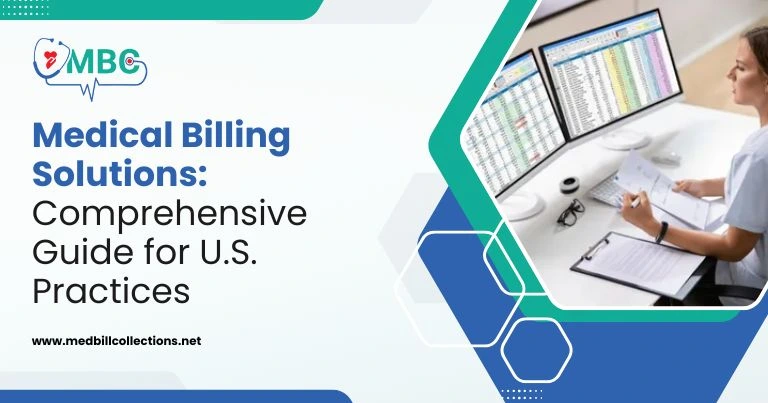Billing for workers’ compensation is one of the most important but complex processes in medical practice management. As health care providers, your focus is simply to provide the best care for your patients, the injured workers, and facilitate their return to a normal, productive life.
However, overseeing workers compensation claims has become a cumbersome process and deters this kind of focus. In contrast to standard health insurance systems, the billing process in workers’ compensation means obeying state laws and requirements, providing extensive paperwork, and dealing with various and tricky reimbursement models.
In particular, physicians, chiropractors, and specialists must be familiar with this kind of billing because it offers not only a more efficient and prompt way to receive payments but also follows the legal rules and enhances practice operations.
This guide outlines the primary workers’ compensation billing issues, explains methods to address them, and covers practical tips for you.
Why Workers’ Comp Billing Is Challenging
Workers’ compensation claims are not just another insurance process—they’re a unique system designed to cover medical care for employees injured on the job. Here’s why they can be tricky to manage:
Special Guidelines: It is important to point out that the majority of states have treatment guidelines for healthcare providers managing work-related injuries. For instance, to fit in the Californian Medicaid budget, claims must adhere to the Medical Treatment Utilization Schedule (MTUS), an evidence-based practice list.
Complex Documentation: Workers’ compensation claim processing requires medical reports about the patient’s condition, treatment, and progress of their injury. Failure to provide comprehensive documentation can result in denied or delayed claims.
Fixed Fee Schedules: Workers’ compensation claims, unlike other insurance claims, pay providers on an established tariff system. For instance, in California, the Official Medical Fee Schedule (OMFS) places a limit on what providers can charge for a specific service.
According to research by the Workers’ Compensation Research Institute, between 20%-25% of workers’ comp claims are initially rejected due to the following reasons, which include errors in documentation and failure to meet deadlines.
Simplifying Workers’ Compensation Billing Process
The first prerequisite to achieving California workers compensation billing simplification is to develop and gain a good grasp of the problem at hand.
Know the Key Players
Workers’ comp claims involve many players, including employers, carriers, third-party administrators (TPAs), and state agencies, which may complicate the entire billing process.
Follow State Guidelines
Workers’ compensation laws and treatment protocols vary from state to state. It is always helpful to know about your state’s guidelines, such as California’s MTUS, to avoid disruptions or denial of your application.
Understand the Documentation Requirements
Documentation is very important. The workers’ compensation program will require you to file elaborate documents with regard to the patient’s injury, the diagnosis, treatment, and progress in recuperation. Did you know that lack of information or incomplete data is considered to be among the leading causes of claim denial?
Use the Right Tools and Technology
Implementing the right tools can make a big difference in managing workers’ compensation billing efficiently.
Specialized Billing Software
Select software that can work exclusively with the workers’ compensation claims management system. Many of these are quite sophisticated systems that replicate numerous activities, including data entry, claims processing, and follow-up. The available tools also connect with state systems such as the California Workers’ Compensation Information System (CWCS).
Real-Time Tracking
Before selecting any tool, make sure it enables real-time monitoring of the claims. This assists you in using it to easily detect problems, such as missing paperwork, wrong codes, or delays.
Automate Data Entry
Automation enhances data quality by eliminating chances of mistakes in recording patient information, codes, and diagnoses, as well as insurance data. A single error in data entry is enough to cause a payment or even a claim rejection.
Focus on Proper Documentation
Proper documentation is the foundational component of billing in workers compensation. Here’s how to do it right:
Create Detailed Medical Reports
Comprehensive medical reports should indicate the type of injury the patient has, what the doctor intended to do, and the patient’s healing details. Don’t be ambiguous—be as precise as possible. For example, rather than recording “patient back pain treatment,” it could be recorded as “patient treated for lumbar strain who underwent physical therapy on given dates.”
Use Correct Coding
When it comes to claim approval, knowledge of accurate ICD-10 and CPT codes is vital. Make it a practice to update coding knowledge frequently because outdated or incorrect codes may affect claim rejection.
Timely Report Submission
The submission of all documentation on time helps. Delays in submission can slow down the entire process of claim filing, as well as your practice’s cash flow. Set up reminders or automated systems to ensure deadlines are met.
Improve the Collections Process
Even with correct billing practices, the process of collecting payment for workers’ compensation claims is not easy. Consider these strategies to improve collections:
Outsource Collections
When your practice lacks the resources to properly pursue unpaid claims, such a task is best left to an agency that focuses on workers compensation collections. These agencies are familiar with the procedures involved in dealing with third-party payers engaged in health services provision.
Appeal Denied Claims
Denied claims don’t have to be a loss. Discuss the reasons for denial, check the mistakes made, if any, and file a request for an appeal. Mostly, claims are usually granted after an appeal.
Track Payments
Engage systems that help one check the status of claims and payments instantly. It allows you to detect possible problems on time and respond to them without delay.
Step 5: Educate and Train Your Staff
Your staff is the backbone of your workers’ compensation billing process. Make sure that they are prepared optimally for the challenges that come with it.
Provide Regular Training
It is important to know that regulatory changes in workers’ comp may occur more often than you think. Remind your team members from time to time about changes in the set rules and improved ways of operation.
Teach Communication Skills
Your staff should be experienced in dealing with insurance companies, employers, and the patients. Clarity in professional communication can minimize conflict and expedite resolution processes.
Establish Best Practices
Teach your team how to gather relevant information about patients, complete documentation, and file their claims on time. Well-trained employees can largely prevent mistakes and ensure they do things right the first time, unlike when they are inexperienced.







